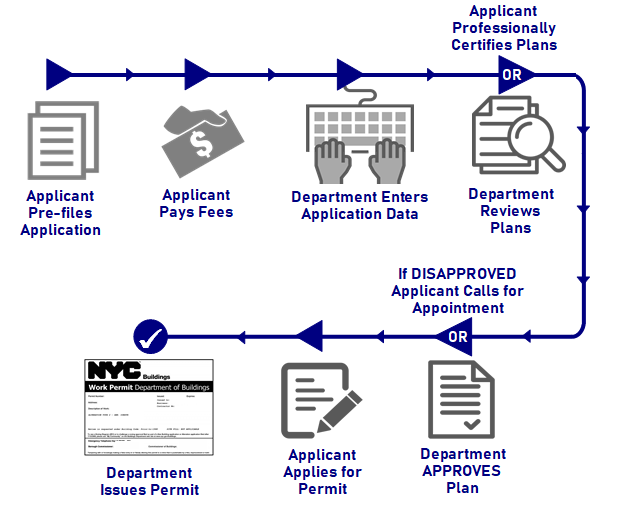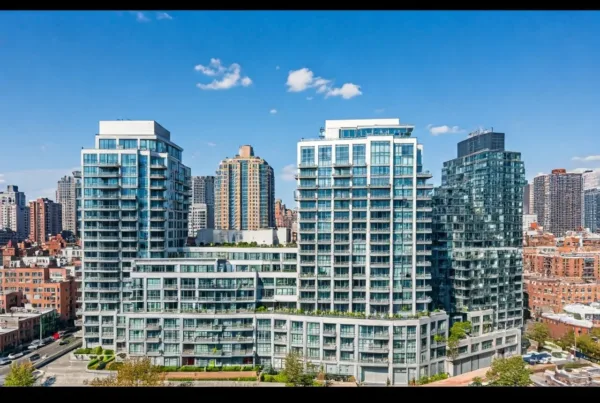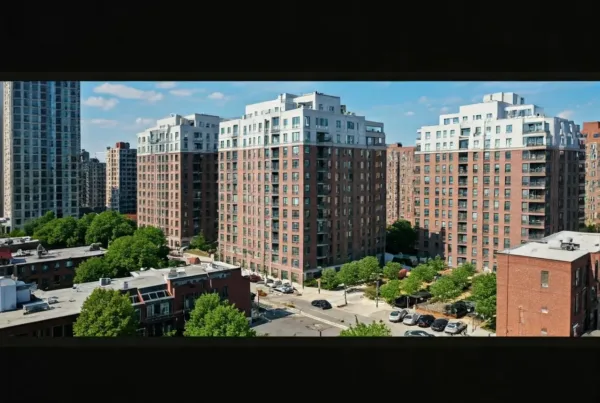Uncover the hidden secrets behind DOB codes, regulations, and inspections in construction projects. What does DOB really mean?
Table of Contents
Introduction to DOB in Construction
In this section, we will introduce you to the Department of Buildings (DOB) and its significant role in the construction industry. You will learn what DOB stands for and why it is crucial for ensuring safe and successful construction projects.
What is the DOB?
The DOB stands for the Department of Buildings. This department plays a vital role in overseeing and regulating construction activities. Their main goal is to ensure that all construction projects meet safety standards and adhere to building codes.
Why Is DOB Important?
The DOB is essential because it is responsible for monitoring and approving construction projects to ensure they are built safely. They issue permits, conduct inspections, and enforce building codes to protect both construction workers and the public from potential hazards on construction sites.
Roles and Responsibilities of the DOB
Building permits are like permission slips that builders need to start construction projects. They ensure that the planned construction meets safety standards and regulations set by the DOB. Before builders can break ground on a new project, they must first get the green light from the DOB through these permits.
Safety Inspections
Safety inspections are like check-ups for construction sites. Inspectors from the DOB visit construction sites to make sure everything is being built safely and according to regulations. They look out for potential hazards and ensure that the workers and the public are not at risk during the construction process.
Code Compliance
Building codes are like the rules of construction that ensure buildings are safe for people to live or work in. The DOB is responsible for making sure that construction projects adhere to these codes. They check that everything from the materials used to the way the building is constructed follows these codes to maintain safety standards.
Impact of DOB on Construction Projects
In the world of construction, building new structures involves many steps and regulations to ensure safety and compliance. The Department of Buildings (DOB) plays a crucial role in overseeing construction projects to make sure they meet the necessary standards. Let’s explore how the DOB impacts construction projects and the steps builders and developers must take to adhere to regulations.

Image courtesy of www.nyc.gov via Google Images
Getting Approval
Before construction can begin on any project, builders and developers need approval from the DOB. This process involves submitting detailed plans and designs to the department for review. The DOB ensures that the proposed construction meets all safety and zoning regulations before granting the necessary permits to proceed. Getting approval from the DOB is a crucial step in any construction project to ensure that it complies with the law.
Adapting to Regulations
Once a construction project has been approved by the DOB, builders may need to make adjustments to their plans to meet specific regulations. This could involve changes to the design, materials used, or construction methods to ensure compliance with building codes. Adapting to these regulations is essential to prevent delays and penalties during construction and to ensure that the final structure meets all safety requirements.
Ensuring Safety
Throughout the construction process, builders must adhere to strict safety guidelines set by the DOB. Safety measures such as regular inspections, proper equipment usage, and adherence to building codes are essential to prevent accidents and ensure the wellbeing of workers and the public. The DOB plays a crucial role in enforcing these safety standards and ensuring that construction projects are completed safely and responsibly.
DOB in New York City
New York City is a bustling hub of construction activity, with tall skyscrapers, iconic bridges, and beautiful homes constantly being built. The Department of Buildings (DOB) plays a crucial role in ensuring that all these projects are safe and comply with regulations. From small renovations to massive developments, the DOB oversees a wide range of construction projects in the city.
| Term | Definition |
|---|---|
| DOB | Department of Buildings |
| Permit | Legal authorization to begin construction or renovation |
| Violation | Failure to comply with building codes or regulations |
| Certificate of Occupancy | Document issued by the DOB stating that a building is safe and suitable for occupancy |
| Inspection | Process of verifying compliance with building codes during construction |
Famous NYC Projects
Some of the most famous construction projects in New York City, such as the Empire State Building and One World Trade Center, have all been subject to the careful scrutiny of the DOB. These iconic structures stand as testaments to the city’s architectural prowess and the DOB’s commitment to maintaining high standards of safety and construction quality.
Building New Condos
One of the popular types of construction projects in New York City is the building of new condominiums, or condos. These residential buildings offer luxurious living spaces in the heart of the city. The DOB closely monitors the construction of these condos to ensure that they meet all safety regulations and building codes. With the population of NYC constantly growing, the demand for new residential buildings, such as condos, continues to rise, making the DOB’s role even more critical in overseeing these developments.
Understanding Local Law 87: Energy Audits & Retro-commissioning
Local Law 87 is a mandate focusing on energy efficiency in buildings, specifically targeting those in certain urban areas. It’s designed to optimize energy consumption and reduce carbon footprints through two critical processes: energy audits and retro-commissioning.
Energy Audits
Energy audits are thorough evaluations of a building’s energy usage. These audits identify areas where energy efficiency can be improved. Conducted by certified professionals, energy audits involve inspecting the building’s systems, such as heating, cooling, lighting, and ventilation.
- Objective: Spot inefficiencies and propose measures to improve the building’s energy performance.
- Outcome: A detailed report offering actionable insights on energy savings and efficiency improvements.
Retro-commissioning
Retro-commissioning is the process of ensuring that existing building systems are operating optimally. Unlike energy audits that provide a snapshot of energy usage, retro-commissioning delves into actual system performance.
- Objective: To fine-tune and adjust current systems to enhance performance.
- Procedure: It involves testing and calibrating equipment to ensure they operate as intended, potentially leading to substantial energy savings.
- Result: Achieving and maintaining improved energy efficiency.
Compliance and Benefits
Building owners must comply with Local Law 87 by conducting these audits and retro-commissioning activities periodically, usually every ten years. This regulation not only promotes more sustainable energy use but also provides a roadmap for reducing energy costs and enhancing system performance.
Initiating the Process
To begin, building owners should partner with experienced engineers or consultants who can carry out comprehensive energy audits and retro-commissioning. The ultimate goal is to foster a greener, more efficient urban environment while reducing operational costs.
In summary, Local Law 87’s energy audits and retro-commissioning processes are essential for maintaining energy efficiency and optimizing building operations. Through these approaches, cities can move towards a more sustainable future.
Understanding Local Law 84 Benchmarking Violations
Local Law 84, part of New York City‘s Greener, Greater Buildings Plan, mandates building owners to annually measure and report their properties’ energy and water usage. This process is known as benchmarking, and it aims to enhance energy efficiency across the city by providing transparency and data-driven insights.
When property owners fail to comply with the requirements of Local Law 84, they incur benchmarking violations. Here’s a breakdown of these infractions:
Key Aspects of Benchmarking Violations
- Failure to Report: If building owners do not submit their energy and water usage data by the designated deadline, they are in violation of the law. This data should be reported to the Environmental Protection Agency’s ENERGY STAR Portfolio Manager.
- Inaccurate Data Submission: Submitting incorrect or incomplete data also constitutes a violation. Accurate metrics are crucial for reliable benchmarking, and discrepancies can result in penalties.
- Missed Deadlines: Timeliness is critical. Missing the reporting deadline leads to automatic fines, typically starting at $500 per missed deadline, but this can escalate with continued non-compliance.
- Lack of Documentation Maintenance: Property owners are required to maintain records that support the data submitted. Failure to keep or provide this documentation when audited triggers violations.
Consequences of Violations
- Financial Penalties: Fines for non-compliance can quickly accumulate, putting financial strain on property owners.
- Public Listing: A record of violations may be publicly accessible, which can affect a building’s market value and reputation.
To avoid such pitfalls, property owners should ensure they understand and meet all Local Law 84 requirements. Regular updates and audits of the data can help maintain compliance and avoid the costly repercussions of violations.
Understanding the DEP Annual Boiler Tune-Up
What is the DEP Annual Boiler Tune-Up?
The DEP (Department of Environmental Protection) annual boiler tune-up is a critical maintenance process required for boiler operators to ensure their systems operate efficiently and comply with environmental regulations.
This tune-up involves a series of checks and adjustments carried out by qualified technicians to enhance boiler performance, reduce emissions, and extend the lifespan of the equipment.
Key Components of the Tune-Up:
- Efficiency Assessment:
- Measure the current efficiency of the boiler to identify areas for improvement.
- Adjust settings to optimize fuel usage and minimize waste.
- Emissions Testing:
- Conduct tests to evaluate levels of pollutants like nitrogen oxides (NOx) and carbon monoxide (CO).
- Ensure emissions comply with local and federal environmental standards.
- Mechanical Checks:
- Inspect and clean burner components to ensure proper combustion.
- Check for leaks, corrosion, or other signs of wear that could affect performance.
- System Calibration:
- Fine-tune controls and safety devices for optimal operation.
- Update software and control systems if necessary.
Why It’s Important:
- Regulatory Compliance: Adhering to DEP regulations helps prevent legal issues and potential fines.
- Cost Savings: Efficiently running boilers consume less fuel, reducing operating costs.
- Environmentally Friendly: Low emissions reduce the ecological footprint of a facility, contributing to cleaner air.
Regularly scheduling a DEP annual boiler tune-up is essential to maintaining a reliable, efficient, and compliant heating system.
Work with the Real Estate Rebate Team
Real Estate Rebates Team is a top real estate brokerage firm in NYC and NJ, dedicated to delivering exceptional service and significant savings. Offering up to a 2.5% commission rebate at closing, we pass these savings directly to clients buying or selling homes. Through education and a transparent rebate system, we empower clients to maximize their benefits, with numerous success stories proving our approach. Our online platform allows you to easily calculate potential rebates and find properties that suit your needs. We negotiate the best prices and secure additional incentives at closing, ensuring you get money back whether selling, renting, or buying a condo, co-op, or townhouse. For new developments, we offer even higher rebates on larger commissions. Real Estate Rebates Team helps clients enjoy greater savings and better returns on their real estate transactions.
Conclusion and Key Takeaways
Understanding the meaning of DOB in construction is crucial for ensuring safe and compliant building projects. The Department of Buildings (DOB) plays a vital role in regulating and overseeing construction activities to maintain high standards of safety and code compliance. By obtaining building permits, undergoing safety inspections, and adhering to building codes, developers and builders can create structures that not only meet legal requirements but also prioritize the well-being of occupants and the community.
 Image courtesy of dob.dc.gov via Google Images
Image courtesy of dob.dc.gov via Google ImagesFinal Thoughts
As we’ve delved into the significance of the DOB in construction projects, it’s evident that following regulations and guidelines set by regulatory bodies like the DOB is essential for the success of any building endeavor. Safety should always be a top priority in construction, and by working in alignment with the DOB’s standards, we can ensure that our buildings are not only aesthetically pleasing but also structurally sound and secure for all who interact with them. Let’s all keep in mind the importance of adhering to regulations and embracing safety measures in every construction project we undertake.
Frequently Asked Questions (FAQs)
Addressing common queries readers might have after reading the article.
What Does DOB Mean in Construction?
DOB stands for the Department of Buildings. It is a crucial organization that oversees and regulates construction projects to ensure they are safe and compliant with building codes and regulations.
Why Do Building Permits Matter?
Building permits are essential before starting any construction work because they serve as official approval from the DOB to proceed with the project. Permits ensure that the construction plans meet safety standards and building codes.
How Does DOB Ensure Safety?
The DOB ensures safety by conducting regular inspections at construction sites to monitor compliance with building codes and regulations. They also review construction plans to verify that they meet safety requirements before work begins.
What Happens if Rules are Broken?
Begin your search and start earning cash back!
If rules set by the DOB are broken, there can be serious consequences. This may include fines, stop-work orders, or even legal actions. It’s crucial to follow the regulations to maintain a safe and compliant construction process.
Understanding Local Law 87 Violations
Local Law 87, part of New York City’s sustainability efforts, primarily focuses on energy efficiency in buildings. It mandates regular energy audits and retro-commissioning to ensure buildings operate optimally and consume less energy. This regulation targets properties over 50,000 square feet to help reduce greenhouse gas emissions.
Key Requirements of Local Law 87
- Energy Audit: Property owners must conduct a thorough energy audit every ten years. This involves assessing the building’s systems and operations to identify potential energy-saving improvements.
- Retro-Commissioning: Post-audit, buildings must undergo retro-commissioning, ensuring that existing systems work efficiently and as intended.
- Energy Efficiency Report (EER): After completing the audit and retro-commissioning, an Energy Efficiency Report must be submitted to the Department of Buildings.
What Constitutes a Violation?
Failing to comply with any component of Local Law 87 can lead to violations. Here are some common issues:
- Missed Deadlines: Not submitting the Energy Efficiency Report by the required deadline.
- Incomplete Reports: Submitting reports that lack crucial information from either the energy audit or retro-commissioning process.
- Non-Compliance in Retro-Commissioning: Failing to complete the retro-commissioning process adequately can also count as a violation.
Consequences of Violations
Property owners who do not comply with Local Law 87 face significant penalties. These can include hefty fines that accumulate annually until compliance is achieved. Notably, the legal and financial repercussions underscore the importance of adhering to regulations.
Overall, understanding and complying with Local Law 87 is integral for property managers and owners to avoid violations, contribute to sustainability efforts, and maintain operational efficiency.
What to Do If Your Building Appears on the Covered Buildings List Unjustly
Finding your building mistakenly listed on the covered buildings list can be frustrating. Here’s a clear guide on what to do next:
- Confirm the Listing: Double-check the list to ensure the inclusion wasn’t an oversight. Verify details such as address and building classification.
- Understand the Criteria: Familiarize yourself with the criteria that qualify buildings for this list. Criteria often include factors like building size, usage, and environmental regulations.
- Gather Documentation: Compile all relevant documents that prove your building does not meet the criteria. This could include diagrams, permits, or official records.
- Contact Local Authorities: Reach out to your local regulatory agency. They can provide specific instructions on how to correct errors. Often, they have dedicated channels for resolving such issues.
- Submit an Appeal: Prepare and submit a formal appeal or request for reevaluation. Attach your documentation and clearly outline why your building doesn’t belong on the list.
- Seek Professional Help: If the process seems complicated, consider hiring a professional consultant familiar with local building regulations. They can guide you through the process effectively.
- Follow Up: Stay proactive by following up with authorities to ensure your request is being processed. Don’t hesitate to ask for updates if you don’t hear back in a timely manner.
By taking these steps, you can correct any inaccuracies and ensure your building is properly categorized.



 Image courtesy of via
Image courtesy of via 


